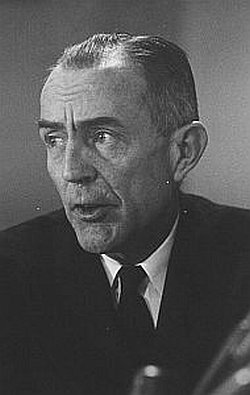 BARR, Norman L. (1908 - 1979)
BARR, Norman L. (1908 - 1979)

Captain Norman Lee Barr, MC USN was a physicist, naval aviator, and flight surgeon in charge of the Aero Medical Space Research Laboratory of the US Navy.
He was born in Myrtlewood, Alabama on August 3th, 1908. He graduated in October 1929 from USAAF Flying School at Kelly Field, Texas, and designated an Airplane Pilot and Airplane Observer. After two years with the Air Force, he was chief pilot for the Isthmian Airlines for two years and engaged in chartered flights in Central and South America.
In 1931, he married with Zola Foster and two years later, he entered Georgetown University Medical School and received his medical degree in 1937. Commissioned in the Navy in 1938, he attended the Navy post-graduate medical school. After a course at the AAF School of Aviation Medicine in 1939, he was designated an Air Force Flight Surgeon. He attended the Navy School of Aviation in Pensacola in 1942 and received his Navy wings.
The World War II years were spent as a Flight Surgeon and Medical Officer with various aircraft carriers and fleet activities. Assigned to the Bureau of Medicine and Surgery in 1946, he became officer in charge of the Special Activities Branch. In 1950, he became head of the Aviation Medicine Division of the Naval Medical Research Institute. Then he was Director of Aviation Medicine Research and Deputy Director for Medical Research.
Dr. Barr spent more than 8000 hours in the air as first pilot and near 4000 hours as second pilot, and observer and was truly an authority in the field of aviation medicine and research. He has engaged in a wide range of research in various fields related to flight safety.
He developed systems for simulated instrument-flying conditions in instrument-training aircraft cockpits. He was the first to determine and explain the need for artificial lights in aircraft cockpits for high-altitude daylight flight. He was also the first to measure and report the important effects of atmospheric brightness on the visibility of cockpit instruments. He designed instruments to compute visibility range and to measure physical variabilities influencing visibility. He perfected a system for reducing the hazards due to the blinding effects of glare from aircraft searchlights during night attacks.
He devised systems for gathering and automatically recording physiological data from airborne pilots, and from animal and human occupants of earth orbiting vehicles, transmitting it to the ground by radio and relaying it to a central laboratory by radio and telephone from any part of the world.
Captain Barr retired from the Navy on 1 September 1959 following more than 21 years of active service.
In 1960 Navy awarded him a Certificate of Exceptional Service in recognition of his extraordinary achievements, as well as for his numerous other significant contributions to aviation medicine.
He died in Arlington, Virginia on April 26, 1979.

